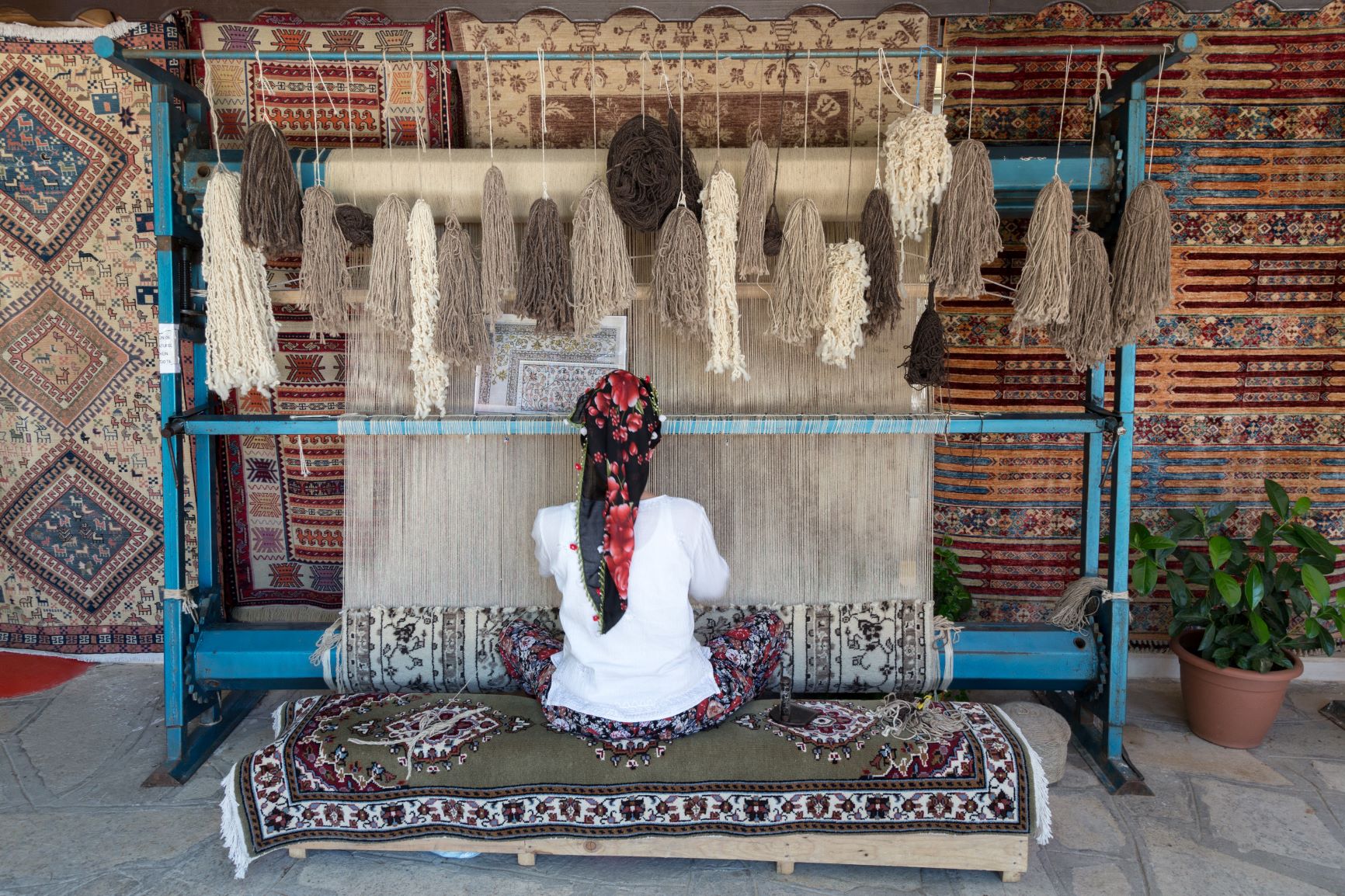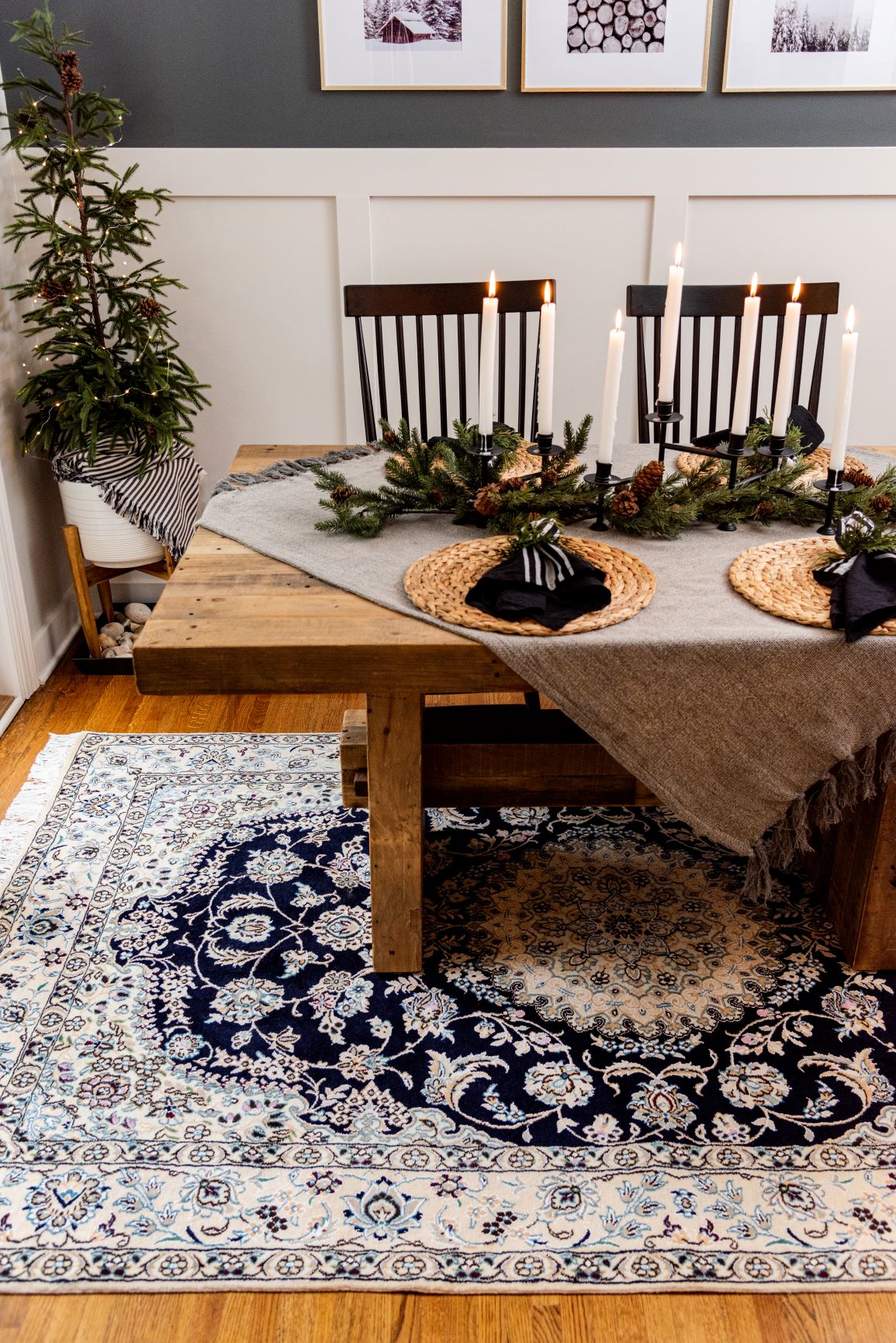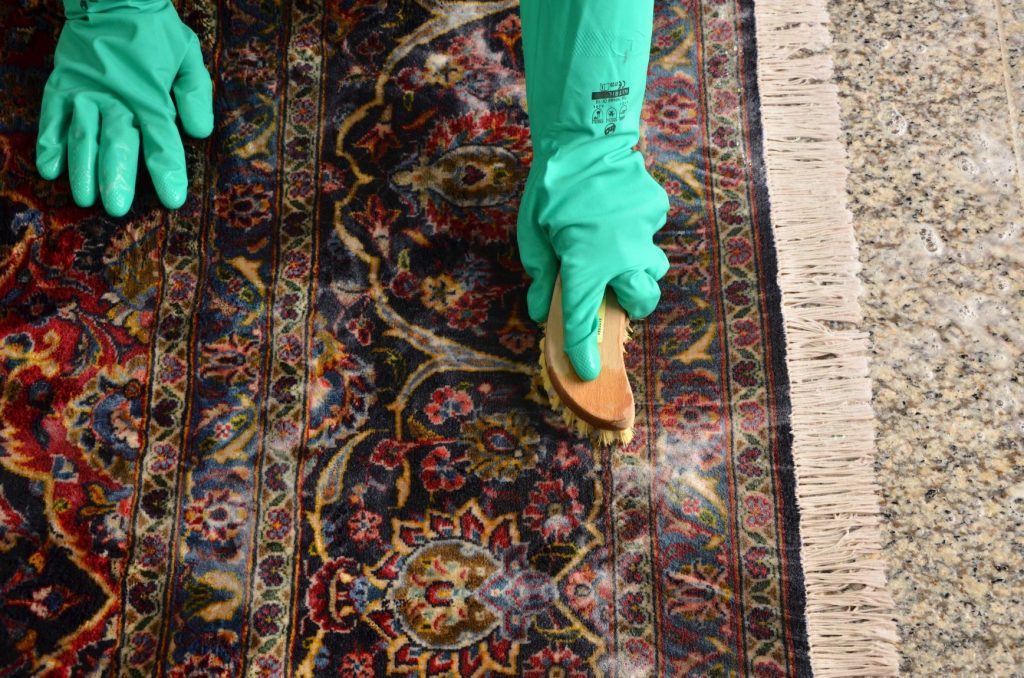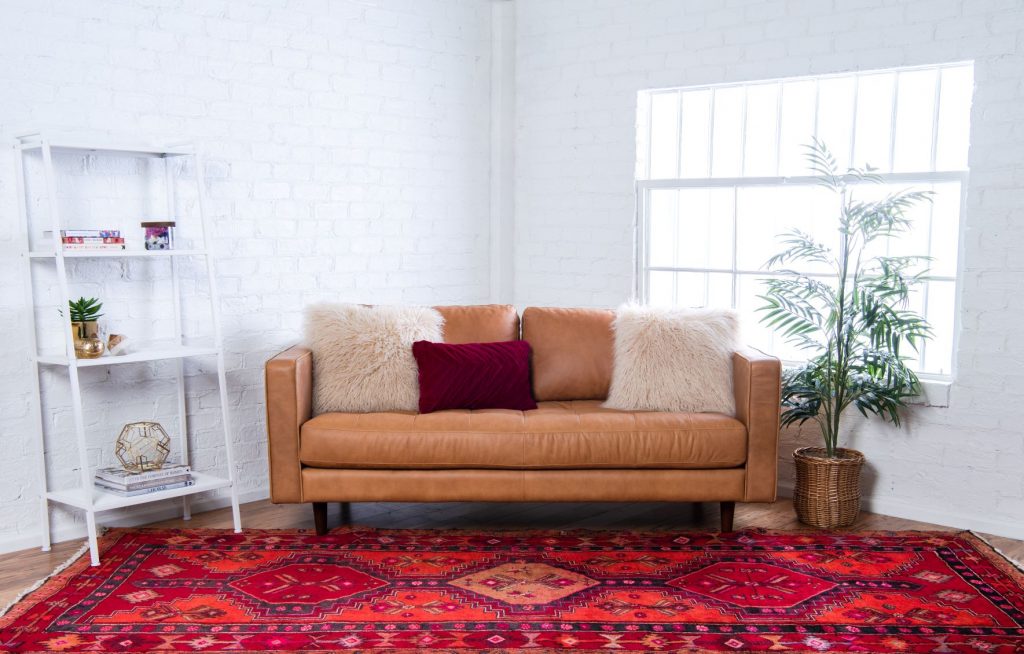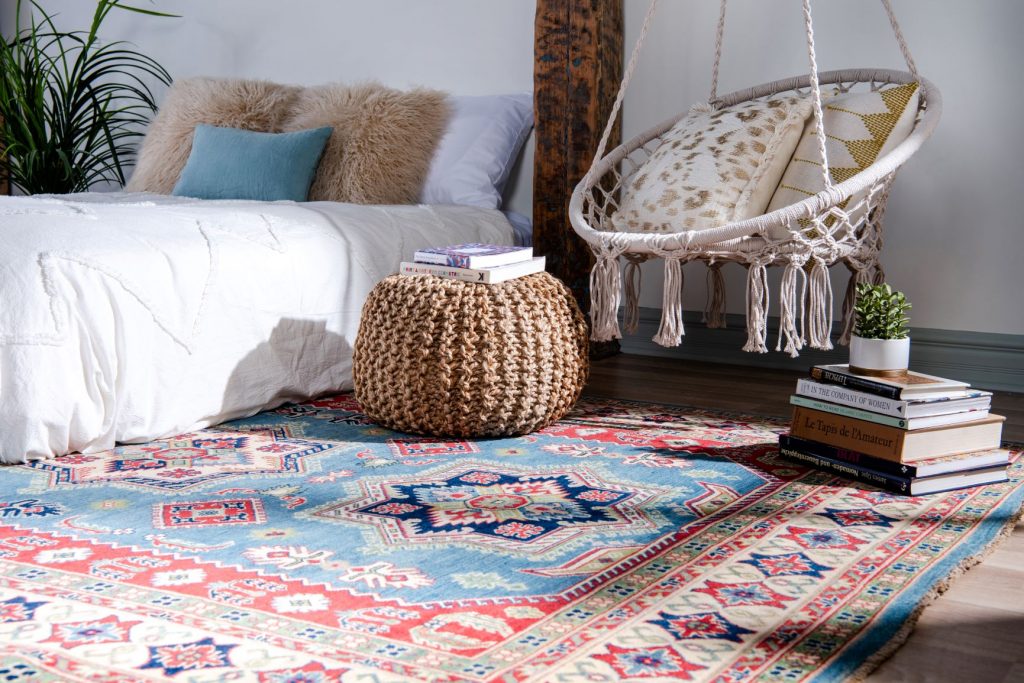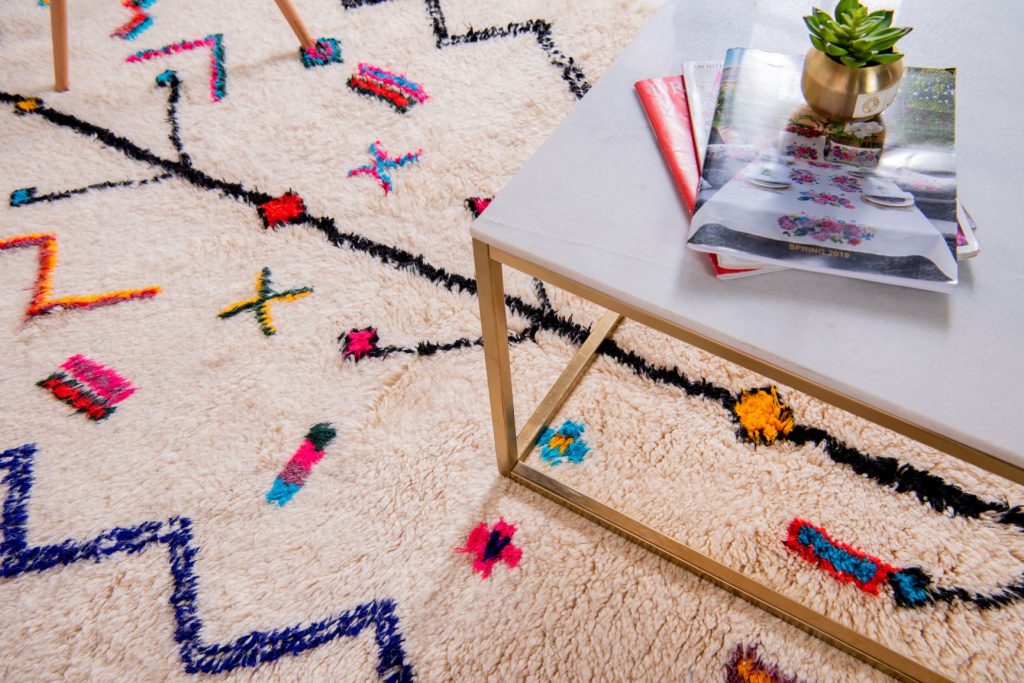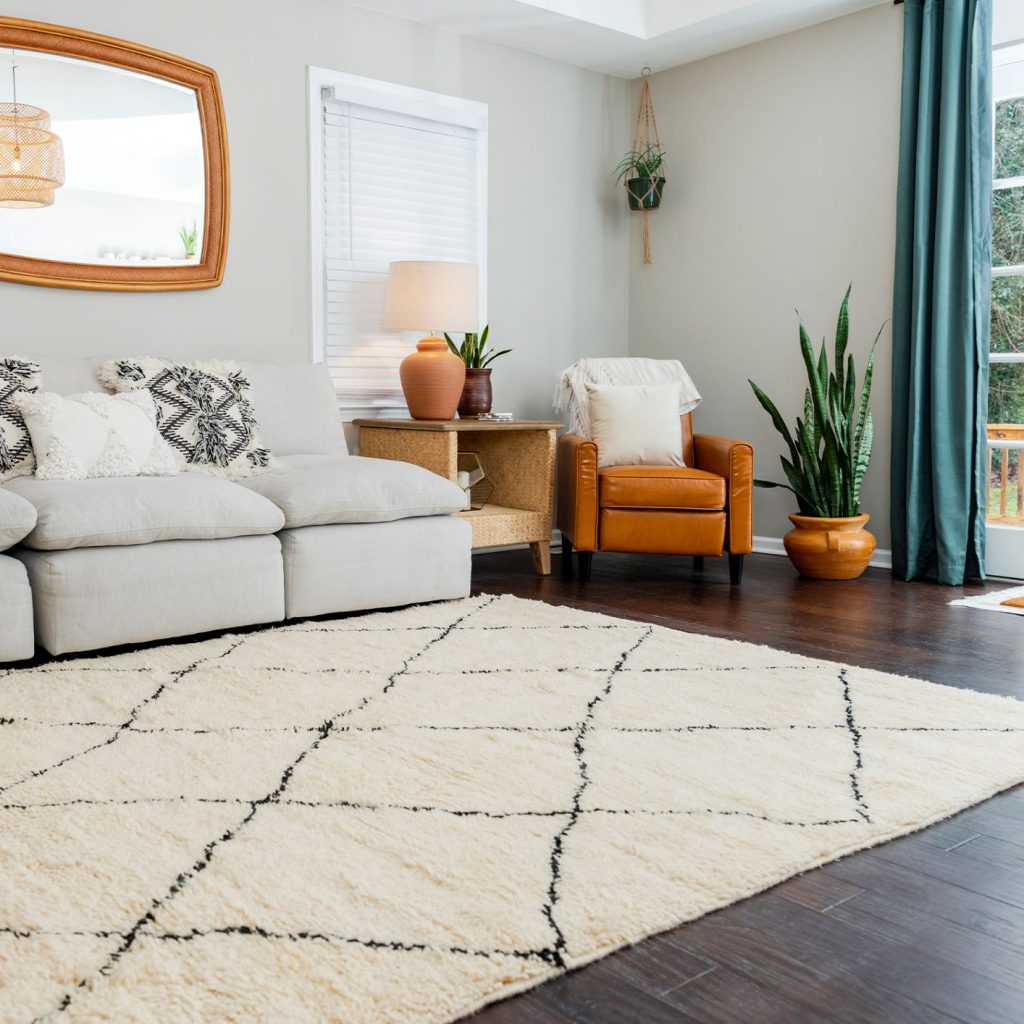Kerman rugs come in a wide range of color and design, but they all have something in common. Almost invariably, Kerman carpets evoke a sense of wonder. They weave together whimsical floral patterns in such inventive ways that they were once considered the best of Persian rugs. Ranging from the most eye-popping reds and pinks to subdued chocolate and amber hues, Kerman rugs look like they belong in palaces. And yet anyone can buy a Kerman carpet and make a palace of even the smallest apartment or house.
Provenance
Kerman rugs (also spelled Kirman) are generally made in the south central part of Iran known by the same name. It is the name of a city and a province. In the 18th century, rugs made in the Kerman province were renowned as the best in Persia. Unfortunately in 1794 the desert city was destroyed in a military siege carried out by Agha Mohamad Khan. He became the first ruler of the Qajar dynasty after defeating the Safavids. Although Iranians lament that Kerman was never the same after that, the region remained a center for the production of quality rugs.
History of Kerman Rugs
Kerman Persian rugs have been exported to the west since the early 17th century. Yet, we know that evidence, namely depictions, indicate rug production in the region from as far back as 2500 years. In the 3rd century Kerman was established as a military outpost for the Sassanid Empire (Neo-Persian Empire). Throughout the centuries the region has been called Kermania, Karmania, and even Zhermanya, in addition to Kerman rugs. All of these names hold a meaning related to the military or combat.
As a defense base, the region saw heavy traffic by troops, travelers, and merchants who frequented the Silk Road. Kerman flourished as a trade outpost attracting merchandise from India, China, Anatolia, and Europe. In 1271 Marco Polo is known to have traveled through Kerman as evidenced by his writings. He writes of a rock called turquoise mined in the mountains of the region, silk tapestries embroidered by women, and other items harder to translate. Historians believe these items are a reference to rugs.
Celebrated Color and Quality
Kerman rugs almost always are woven on a cotton foundation with exceptional quality sheep’s wool. The knot density for Kerman rugs varies but generally falls in the range of 100 to 500 knots per square inch. This is in the mid-range for Persian carpets. The weave is not as tight as Isfahan or Nain rugs, but that is because Kerman rugs are made slightly thicker for a more plush and sumptuous feel.
Colors used frequently in Kerman rugs are brilliant to muted reds, golds, ambers, greens, all shades of blue. Whites range from eggshell and ivory to antiqued beige. Rarer colors found in Kerman carpets are olive khaki and light orange. Connoisseurs of color gravitate toward Kermans because, of all the Persian carpets, they have the most brilliant assortment. Kerman’s weavers may be esteemed for using the most varied and imaginative palette, but the wool dyers deserve much credit as well. The wool is dyed before it is spun, allowing for more uniform color. Kerman dye specialists are sought after for their skill in producing delicately vivid lighter shades as well as dramatic prime colors and darker hues.
Style & Design
The overarching characteristic of Kerman rugs is ornate curvilinear florals. The signature flower of almost every Kerman rug is the Damask Rose, which also provides the pervasive pink-red color used in many Kerman rugs. One of the most common Kerman designs has a central medallion set apart by a buffer of solid bright red before spanning out to more florals around the border. Of the Kermans that have an all over design pattern, the most recognizable is the repeated vase pattern. Other designs incorporate lattices or wildly inventive florals. Pictorial Kerman rugs are rarer but do exist, sometimes depicting portraits or even reproductions of classical paintings.
Contemporary Use of Kerman Rugs
Rugs from Kerman are a dream for collectors and designers. Their range of color allow decorators a wide array of options. And their whimsical designs bring a sense of joy and wonder to interiors. Kerman carpets are so versatile that they can evoke opulence and grandeur in the dining room, plush warmth in the living room, or turn a little girl’s room into a reverie fit for a princess.
Kerman rugs are also thicker and denser so they endure through the ages and can handle high traffic areas. Because of their durability, these rugs retain their structure and color for years, even hundreds of years. As such they also hold their value well and can be passed down through generations.


